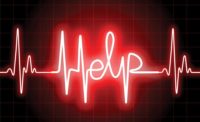
Someone on your loading dock collapses. He has no pulse and poor skin color. What must happen for this victim to have a greater than 5% chance of making it to the hospital alive? A rescuer must call 911 immediately to get an ambulance on the way; bring an automated external defibrillator (AED) to the victim; make sure the victim is face-up and rip open his shirt so electrodes can be applied to his bare chest; turn on the AED and follow the audio prompts. If a shock is advised, everyone must stand clear when it is delivered, and cardiopulmonary resuscitation (CPR) must begin immediately. If the AED advises no shock, then CPR must also begin immediately.
Will anyone at your organization have the presence of mind — and the courage — to do all this? Will your rescuers move with speed and precision?
No one should expect that a collapsed victim will bounce back to life if the rescuers only move quickly enough and push that shock button. Sudden cardiac arrest requires more than just pushing a button. It requires a comprehensive AED program.
Think about the rescue
Ask yourself questions such as: Who will we train to use the AED and to do CPR? How will we maintain the AED, its electrode pads, and batteries over the next decade? How will we support awareness of our program, our equipment, and our rescuers?
Some salespeople claim their AED is so simple to use you do not need to train anyone. Don’t believe them. No matter how simple the AED on your wall, the task before your rescuers is the same. They still need the presence of mind, the confidence, and the courage to act quickly and precisely. This won’t happen if they aren’t trained in the basics of what a rescue requires.
CPR is essential
About half of all AEDs applied to victims find on the first heart analysis that “no shock is advised.”1 At that point, only CPR can save the victim. Performed well, chest compressions on the victim’s sternum at a rate of 100 per minute and 11/2 to 2 inches deep — the rate and depth recommended by the American Heart Association (AHA) — can lead to a shockable heart rhythm on the next heart analysis.
But not only unshockable victims need CPR. Once a fibrillating heart has been shocked, more than 60% of the time it presents no organized heart rhythm a full minute later, according to the 2005 American Heart Association Guidelines for Cardiopulmonary Resuscitation and Emergency Cardiovascular Care. Significant blood flow to the heart takes even longer.
By bringing all electrical activity and muscle movement in the heart to a complete stop, a shock can allow the heart to begin reorganizing its electrical rhythm. If the struggling heart is to succeed in reorganizing itself, it needs oxygenated blood for its starved inactive muscles.
Once the shock is delivered, this can only be provided by CPR. A rescuer who delivers a shock when told to, and then stands around waiting for the victim to regain consciousness may watch the victim die. The climax of a successful rescue is often not the shock but the CPR that precedes or follows the shock.
Components of a comprehensive program
A comprehensive AED program typically involves:
- Buying and installing AEDs
- Buying and installing rescue accessories including scissors to cut clothes, razors to shave chest hair if necessary, gloves and barrier masks to protect rescuers, etc.
- Enlisting a physician to act as medical director for the program to review all policies and procedures
- Inspecting all AEDs regularly to make sure they are in working order, typically every month
- Refreshing electrode pads and batteries on a regular basis
- Training Emergency Response Teams about rescue basics, including using the AED and performing CPR
- Re-training these teams on a regular basis, typically every two years
- Reporting the location of all AEDs to local authorities
- Developing a process for reporting rescues to local authorities
- Replenishing electrode pads after use in a rescue.
REFERENCE
1 AP Hallstrom, JP Ornato, M Weisfeldt, “Public-Access Defibrillation and Survival after Out-of-Hospital Cardiac Arrest.”The New England Journal of Medicine. 2004; 351:644.
